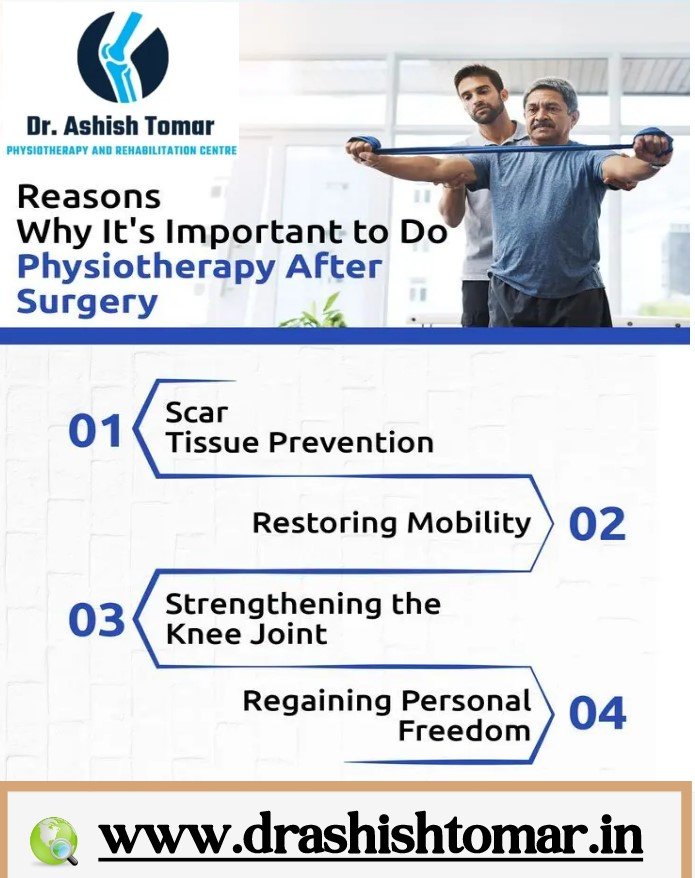The Role of Physiotherapy After Surgery

Physiotherapy plays a crucial role in the recovery process after surgery. Here’s how it typically supports patients’ post-surgery:
- Restoring Mobility: Surgery often leads to reduced mobility and flexibility due to tissue trauma and immobilization. Physiotherapy helps in restoring range of motion in joints and muscles through exercises, stretches, and manual therapy techniques.
- Pain Management: Surgery can cause pain and discomfort, which may hinder recovery. Physiotherapists use various modalities such as heat, cold, ultrasound, or electrical stimulation to alleviate pain. They also teach patients pain management techniques and prescribe exercises that can help reduce pain over time.
- Preventing Complications: Immobility after surgery can increase the risk of complications such as blood clots, pneumonia, and pressure sores. Physiotherapy interventions like breathing exercises, early mobilization, and muscle strengthening can help prevent these complications.
- Improving Strength and Function: Surgery often weakens muscles and reduces overall strength. Physiotherapy focuses on strengthening specific muscle groups related to the surgical site or affected area. This helps patients regain functional abilities necessary for daily activities and sports or work-related tasks.
- Enhancing Healing: Physiotherapy techniques like manual therapy and therapeutic exercises can promote blood circulation and tissue healing around the surgical site. This can accelerate the overall recovery process and improve outcomes.
- Educating Patients: Physiotherapists educate patients about their condition, the importance of adherence to exercise programs, proper body mechanics, and strategies to prevent future injuries or complications. This empowers patients to take an active role in their recovery and long-term health.
- Customized Rehabilitation Plans: Each patient’s needs and recovery trajectory are unique. Physiotherapists assess individual factors such as age, fitness level, type of surgery, and any pre-existing conditions to develop personalized rehabilitation plans tailored to optimize recovery outcomes.
- Monitoring Progress: Physiotherapists closely monitor patients’ progress throughout the rehabilitation process. They adjust treatment plans as needed based on improvements or setbacks, ensuring that patients continue to make steady progress towards their recovery goals.
Overall, physiotherapy is an integral part of the multidisciplinary approach to post-surgical care, aiming to maximize function, minimize complications, and facilitate a swift and successful return to normal activities.
Tag: #PhysiotherapyRecovery #SurgeryRehabilitation #PostOperativerPhysiotherapy #physiotherapyaftertotatlkneereplacement #PhysioAftertotalhipreplacement #RehabilitationJourney #SurgeryRecoveryPlan #PhysiotherapyGoals #SurgicalRehab #PhysiotherapyCare #healthandwellness

Leave a Reply